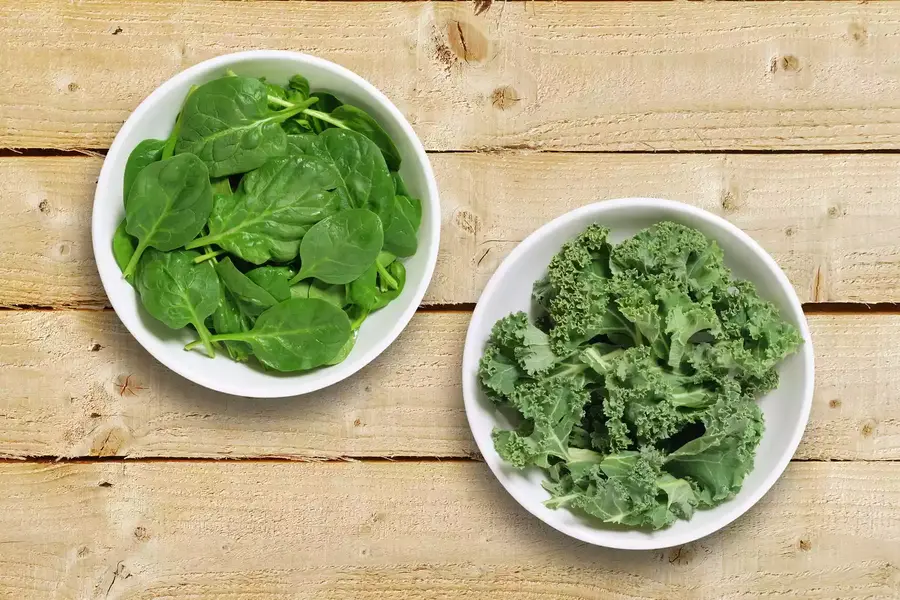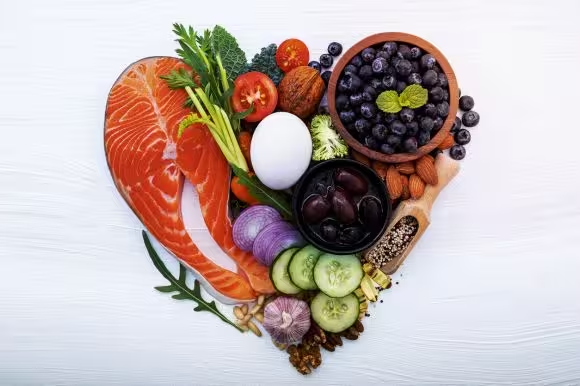Leafy greens like kale and spinach are among the most nutrient-dense vegetables you can eat. They provide a wide array of vitamins, minerals, antioxidants, and other health-promoting compounds. But when comparing kale and spinach head-to-head, which one comes out on top? In this article, we’ll break down the nutritional profiles of these two powerhouses, explore their health benefits, and help you determine which one best suits your needs.
Why Leafy Greens Are Essential for Your Health
Before diving into the kale vs. spinach debate, let’s first acknowledge why leafy greens are so important for your health. Leafy greens are often referred to as “superfoods” because of their numerous health benefits. They are low in calories but high in essential nutrients such as:
- Vitamins: Particularly A, C, E, and K.
- Minerals: Including calcium, magnesium, and iron.
- Fiber: Aiding digestion and weight control.
- Antioxidants: Protecting your cells from oxidative stress.
Incorporating leafy greens into your diet can lower the risk of chronic diseases like heart disease, diabetes, and certain cancers. They also support gut health and may even help with weight management.
Nutritional Breakdown of Kale vs. Spinach
When it comes to nutrition, both kale and spinach have a lot to offer, but they vary slightly in their strengths. Here’s a closer look at their nutritional profiles.
Macronutrients: How Do They Compare?
Calories and Carbohydrates
- Kale: 49 calories per 100 grams
- Spinach: 23 calories per 100 grams
Kale contains more calories than spinach, largely due to its higher carbohydrate and fiber content. However, both are still low in calories compared to other foods, making them excellent choices for weight-conscious individuals.
Protein Content
- Kale: 4.3 grams of protein per 100 grams
- Spinach: 2.9 grams of protein per 100 grams
Both greens contain moderate amounts of protein, but kale provides a bit more. Protein is essential for repairing tissues, building muscles, and producing important enzymes.
Fiber
- Kale: 3.6 grams of fiber per 100 grams
- Spinach: 2.2 grams of fiber per 100 grams
Kale takes the lead in fiber content. A diet high in fiber supports healthy digestion, stabilizes blood sugar levels, and helps maintain a feeling of fullness longer, making kale particularly beneficial for those looking to control their appetite.
Vitamins and Minerals: A Deep Dive
Vitamin A: Vital for Vision and Immunity
- Kale: 199% of the daily value (DV) per 100 grams
- Spinach: 188% of the DV per 100 grams
Both kale and spinach provide more than enough vitamin A, which plays a critical role in maintaining healthy vision, supporting the immune system, and promoting cell growth. Though kale offers slightly more, the difference is minimal.
Vitamin C: Boosting Immunity
- Kale: 200% of the DV per 100 grams
- Spinach: 47% of the DV per 100 grams
Vitamin C is vital for immune health, collagen production, and skin health. Kale far exceeds spinach in this area, making it a stronger contender for those seeking to boost their vitamin C intake.
Vitamin K: Bone Health and Blood Clotting
- Kale: 705% of the DV per 100 grams
- Spinach: 604% of the DV per 100 grams
Both greens are packed with vitamin K, which is crucial for blood clotting and bone health. Consuming foods high in vitamin K helps prevent osteoporosis and fractures.
Iron: Supporting Energy and Oxygen Transport
- Kale: 8% of the DV per 100 grams
- Spinach: 15% of the DV per 100 grams
Spinach wins the iron contest, an essential mineral that supports the production of hemoglobin, the protein in red blood cells responsible for transporting oxygen throughout the body. For individuals at risk of iron deficiency (such as women of childbearing age or vegetarians), spinach may be a better choice.
Antioxidant Powerhouse: The Role of Lutein and Zeaxanthin
Both kale and spinach are rich in lutein and zeaxanthin, powerful antioxidants known to protect against age-related macular degeneration and cataracts. However, kale edges out spinach in terms of quantity.
- Kale: Contains 5 times more lutein than spinach per 100 grams.
- Spinach: Still provides significant lutein and zeaxanthin, beneficial for eye health.
Consuming a diet rich in these antioxidants can help maintain vision health, especially in older adults.
Health Benefits: How Do Kale and Spinach Contribute to Wellness?
1. Heart Health
Kale’s Heart Benefits
Kale is rich in fiber, omega-3 fatty acids, and potassium, all of which contribute to heart health by helping to lower cholesterol levels and blood pressure. Research suggests that the consumption of cruciferous vegetables, like kale, can reduce the risk of cardiovascular disease.
Spinach’s Heart Benefits
Spinach contains nitrates, compounds that improve blood flow and reduce blood pressure. It also has folate, which supports heart health by reducing levels of homocysteine, a compound linked to heart disease.
Winner: Both are excellent for heart health, though spinach’s nitrates may offer a slight advantage for individuals with high blood pressure.
2. Bone Health
Kale for Stronger Bones
With higher calcium and vitamin K levels, kale is a bone-strengthening powerhouse. Vitamin K helps activate proteins that bind calcium to your bones, improving bone density and reducing the risk of osteoporosis.
Spinach’s Contribution to Bone Health
Spinach contains vitamin K and magnesium, both of which play a role in bone health. However, spinach’s oxalate content can inhibit calcium absorption, meaning it may not be as beneficial as kale for bone strength.
Winner: Kale takes the lead in bone health due to its calcium content and better absorption rates.
3. Digestive Health: The Role of Fiber
Kale’s High Fiber Content
Kale contains a higher amount of dietary fiber than spinach, which helps support digestive health. Fiber aids in regular bowel movements, preventing constipation and supporting gut bacteria, contributing to overall well-being. The rough texture of kale also slows down digestion, helping regulate blood sugar levels.
Spinach’s Impact on Digestion
While spinach has a lower fiber content than kale, it is still a significant source of fiber and offers digestive benefits. Its softer texture makes it easier to digest, making spinach a good option for people with sensitive stomachs or digestive issues.
Winner: Kale wins in terms of fiber content, but spinach’s mild nature makes it easier for people with digestive sensitivities.
4. Cancer Prevention
Kale’s Cancer-Fighting Properties
Kale belongs to the cruciferous vegetable family, known for its cancer-fighting properties. It contains glucosinolates, compounds that have been shown to inhibit the growth of cancer cells and promote detoxification in the body. Sulforaphane, another compound found in kale, has potent anti-cancer effects, particularly for breast and colon cancers.
Spinach’s Role in Cancer Prevention
Spinach is high in antioxidants like flavonoids and carotenoids, which protect cells from oxidative damage. These compounds are associated with a reduced risk of cancers, particularly in the digestive tract.
Winner: Kale’s glucosinolates and sulforaphane give it a stronger edge in terms of cancer prevention.
5. Eye Health: Protection Against Age-Related Issues
Both kale and spinach are rich in lutein and zeaxanthin, antioxidants that play a vital role in eye health. They protect against age-related macular degeneration, cataracts, and other vision problems.
Kale’s Eye Health Benefits
Kale has a significantly higher lutein content compared to spinach, offering more protection for the eyes. Studies have shown that diets rich in lutein can help delay the onset of age-related macular degeneration.
Spinach for Eye Health
Although spinach contains less lutein than kale, it is still a valuable source of this antioxidant and provides substantial eye health benefits. Spinach’s milder flavor may make it a more palatable option for those looking to incorporate more lutein into their diet.
Environmental Impact of Kale and Spinach Farming
Sustainability is a growing concern for many consumers. Let’s explore the environmental footprint of growing kale and spinach.
Kale’s Environmental Impact
Kale is relatively easy to grow, requiring less water and fewer pesticides than many other vegetables. Its resilience to pests means it is often grown organically, which reduces its environmental impact.
Spinach’s Environmental Considerations
Spinach, while not environmentally unfriendly, is more prone to pests and diseases, meaning it may require more chemical inputs if not grown organically. This could increase its environmental footprint.
Winner: Kale is the more sustainable option overall.
Culinary Uses: Kale vs. Spinach in the Kitchen
Kale’s Versatility in Cooking
Due to its tougher, fibrous texture, kale is best suited for hearty dishes such as
soups, stews, and stir-fries. Kale chips have also become a popular snack, offering a healthy alternative to potato chips. Massaging kale with olive oil before consuming it raw in salads helps to soften its tough leaves.
Spinach’s Ease of Use
Spinach has a soft, delicate texture, making it ideal for salads, smoothies, and quick-cooking dishes like omelets and sautés. Its mild flavor allows it to blend seamlessly into a variety of recipes, from pasta to dips.
Conclusion: Which Should You Choose?
When comparing kale and spinach, both stand out as nutritional all-stars, and choosing between them depends largely on your personal health needs and taste preferences. Kale offers more vitamin C, calcium, and fiber, making it a great choice for bone health and cancer prevention. Spinach, on the other hand, provides more iron and is an excellent option for those looking to boost their blood health or consume fewer calories.
Instead of focusing on which is better, try incorporating both into your diet. By mixing them in salads, smoothies, and meals, you can enjoy a well-rounded array of nutrients that will support your overall health.




